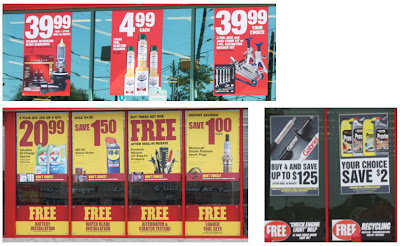 Barely a week removed from Black Friday and just days from
Cyber Monday, retail marketers are already checking just how “black” Black
Friday was and are adding up their earnings from Cyber Monday. They are also reflecting on how their
marketing efforts resonated with their customer: what they did right this year
and what needs to be changed moving forward.
Barely a week removed from Black Friday and just days from
Cyber Monday, retail marketers are already checking just how “black” Black
Friday was and are adding up their earnings from Cyber Monday. They are also reflecting on how their
marketing efforts resonated with their customer: what they did right this year
and what needs to be changed moving forward.
Like any retail marketer, I wait with eager anticipation
during the days leading up to Black Friday so it is no surprise that last Friday
morning, I arrived at my local upscale mall just as it opened. With camera and
notepad in hand, I was eager to take several pictures and jot down my
observations, but within a short time, disappointment set in.
There were plenty of creatively designed window displays
filled with festive holiday colors, artificial snow and cozy looking scenes. But
after seeing what retailers promoted on digital channels, lacking was much of a sign of coordinated marketing
efforts between digital marketers and in-store marketers within the same brand.
The lack of coordination reminds me of the story line from
Dr. Seuss’s The Grinch Who Stole
Christmas The Grinch was inspired to ruin Christmas for the citizens of Whoville
because of all the “noise, noise, noise” of Christmas. He then schemed and then
concocted a dastardly plan to ruin Christmas for all. Do your holiday marketing efforts reflect
more “noise” than they do a peaceful coordinated harmony? If not, below are tips that will help
you:
1. Integrate online, digital and in-store
channels.
If I had looked at your brand’s website,
Facebook page and other digital channels, prior to Black Friday, would I have
seen an incentive to shop on Black Friday or would I only have been encouraged
to buy online? Offering digital coupons
- redeemable in-store – is a good way to get traffic to the store. Additional discounts could be offered by
encouraging customers to register with your brand, thus giving your CRM valuable
data to be mined later.
Another thought would be to harvest the
power of social media. What if you offered in-store deals if your customers and
a handful of their friends checked in on Foursquare at your store on Black
Friday? Other possibilities include allowing in-store customers to scan bar and
QR codes so that they can get additional information on the product or brand. With all of these ideas, in-store signing is
essential to communicate a cohesive message to the customer.
2. Does your cause draw customers in-store?
Even if your cash registers are ringing at
a higher rate over the holidays, don’t let your cause marketing efforts fall by
the wayside. A worthy cause, promoted
seamlessly across multiple channels appeals to a customers emotions and brings
them back time and again.
3. What can we learn from in other retail
segments?
Retail segments all have their strengths
and I am a big proponent of learning from our retail counterparts. The quick-service
restaurant industry, for example, has a tremendous advantage over other
retailers when it comes to omnichanelling their marketing efforts. Have you
taken a look at how your colleagues in the restaurant industry market to their
customers? While the target demographics for a quick-service restaurant customer
differ from that of a high-end retailer, one can still learn from their overall
strategy. For example, in this
blog note Subway’s efforts were dialed in when they effectively
“omnichannelized” their marketing efforts.
Reality
check
Are these ideas worth some additional
thought? Or when reality sets in do you
think that putting these ideas into action is insurmountable in light of the
challenges you already have in the retail marketing process? Some of these challenges are addressed in
these excellent blogs Curing
the Fragmentitous Blues and Top 5
KPIs for At-Store Marketing.
Happy holidays and happy retail marketing!




